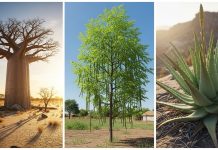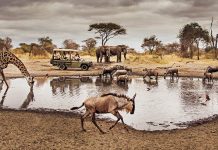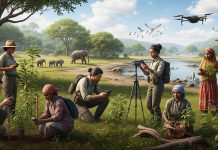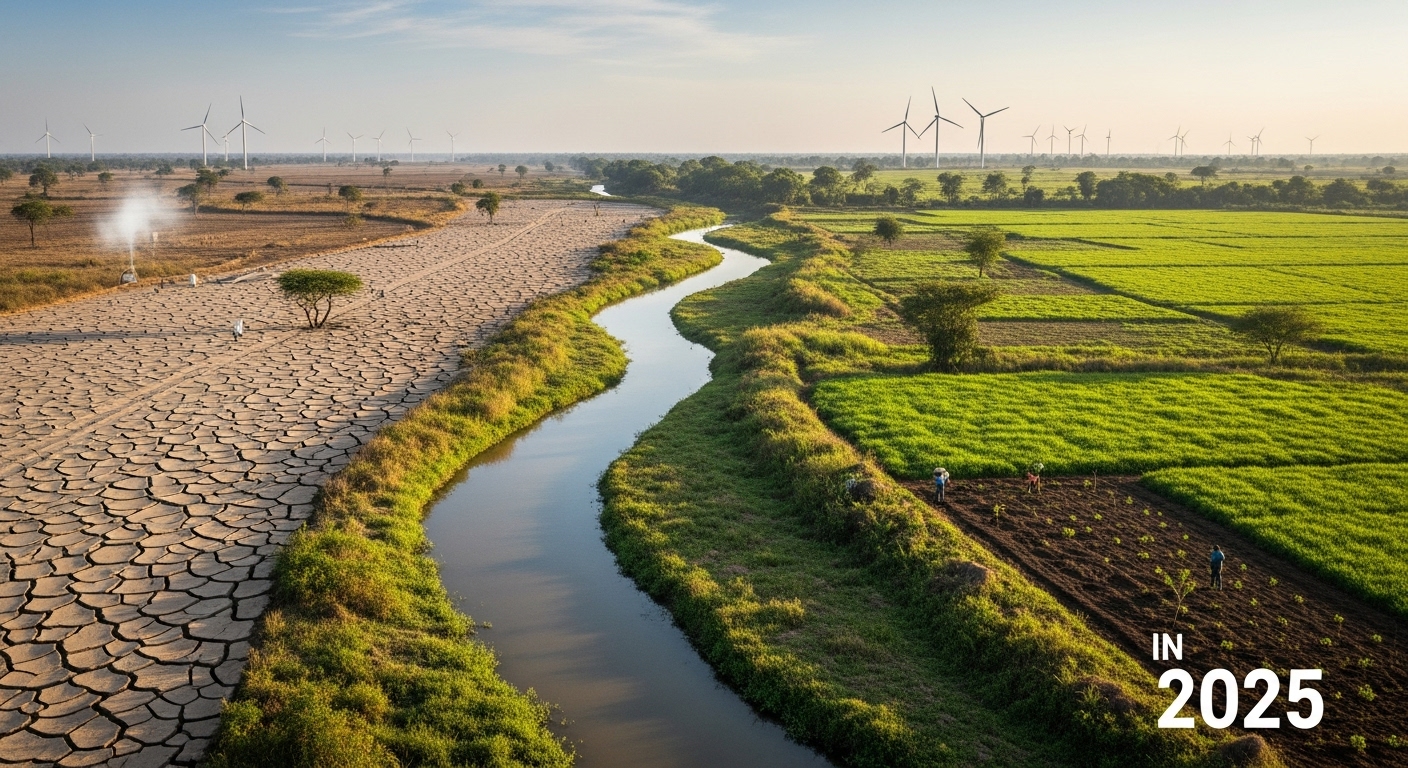As we near the end of 2025, the world finds itself grappling with a cascade of pressing environmental, wildlife, climate, and conservation problems. These are interconnected, accelerating one another, and presenting deep risks for people and ecosystems. Below are some of the most urgent fronts, along with how we might start fixing them in 2026.
1. Climate Change & Global Warming
Extreme weather events: severe floods, droughts, wildfires, and hurricanes continue to intensify as global temperatures rise. The Global Risks Report 2025 places “extreme weather events” and “biodiversity loss & ecosystem collapse” among the top dangers the world faces over the next decade.
In Africa, particularly in the Horn, prolonged droughts and erratic rains are threatening water and food security. Communities dependent on farming are increasingly vulnerable to climate shocks and livelihood loss.
How to combat in 2026: Prioritise investment in resilient infrastructure (drought-proof crops, flood defences, early-warning systems). Scale up climate adaptation funding, especially in Africa. Support community-based disaster planning and ecosystem restoration (wetlands, forests) to buffer shocks.
2. Biodiversity Loss
The evidence is stark: across terrestrial, freshwater, and marine ecosystems, human activities are eroding biodiversity at a dramatic pace. For instance, a study found that species-rich sites impacted by humans had, on average, 20% fewer species than less-impacted sites.
Loss of biodiversity matters for food security, medicine, ecosystem services, and human well-being
How to combat in 2026: Strengthen networks of protected areas; enforce anti-poaching and habitat-protection laws; invest in large-scale habitat restoration (including corridors linking habitats); and empower indigenous and local communities as stewards of biodiversity.
3. Deforestation
Deforestation remains a stubborn global challenge. According to the Forest Declaration Assessment 2025, 8.1 million ha of forest were lost in 2024 alone-63% higher than the pace required to meet the 2030 goal of halting forest loss.
In Africa, research shows the continent has the highest rate of forest loss globally, with around 3.9 million ha lost annually in the 2010-20 period. Deforestation in West Africa is also driving water crises: clearing 1,000 ha in Niger and Nigeria was correlated with the loss of 9.25 ha of surface water.
How to combat in 2026: Enforce moratoriums on illegal logging; promote agroforestry and sustainable land-use; implement and scale up REDD+ (Reducing Emissions from Deforestation and forest Degradation) and carbon-offset schemes; incentivise forest-friendly livelihoods for communities (not logging).
4. Pollution (Plastic, Air, and Water)
Plastic pollution continues to choke oceans and rivers, impacting marine life as microplastics enter food chains. Urban air pollution remains a major health threat, especially in rapidly growing cities in Africa and Asia. Meanwhile, water pollution, topsoil erosion, and agricultural chemical run-off undermine ecosystems and human health. These issues often aggravate climate and biodiversity stress.
How to combat in 2026: Accelerate bans or restrictions on single-use plastics; invest in waste-management and recycling infrastructure; implement clean-air standards and monitoring in major cities; reduce fossil-fuel burning and industrial emissions; protect and restore wetlands and watersheds to filter pollutants.
5. Food & Water Insecurity
Soil erosion, unsustainable farming practices, and worsening drought/flood cycles threaten topsoil and freshwater supplies globally. In Africa, millions lack reliable access to clean water or electricity; climate stresses exacerbate these vulnerabilities.
How to combat in 2026: Support climate-smart agriculture (drought-resistant crops, intercropping, sustainable irrigation); invest in renewable energy and clean water infrastructure in vulnerable regions; empower small-holder farmers and communities to adopt regenerative practices.
6. Wildlife Disease & Ecosystem Health
While often less headline-grabbing, wildlife disease outbreaks (and their spillover into humans) pose a serious risk. For instance, degraded ecosystems weaken natural buffers to zoonotic transmission. Conservation efforts must account for the health of the ecosystem as a whole.
How to combat in 2026: Fund more wildlife-disease research; integrate wildlife health monitoring into conservation programmes; strengthen community engagement in ecosystem surveillance and outbreak response.
Looking Forward: The Road into 2026
2025 has been a year of both crisis and glimmers of innovation. Conservation is not an optional add-on to development; it is central. As we move into 2026, three cross-cutting actions will matter:
- Climate finance and technology: Simplify access to climate and nature finance for low-income countries; deploy green technologies (solar, precision agriculture, remote sensing), especially in Africa and the Global South.
- Community empowerment and stewardship: Nature-positive outcomes depend on local participation. Build capacity in indigenous and local communities, reward stewardship, and embed conservation in livelihoods rather than exclude people from it.
- Global collaboration and policy alignment: North–South partnerships must accelerate; legal and economic frameworks (trade, consumption patterns) must shift, e.g., tackling how high-income countries’ consumption drives biodiversity loss elsewhere.
Final Thought
If 2025 taught us anything, it’s that the environmental and climate challenges we face are interlinked, and so are their solutions. For Africa and the world, the vision for 2026 must shift from reactive disaster response to proactive resilience-building, justice, and prosperity through nature. Time is short, but the pathways exist. By investing in people, ecosystems, and science, we can transition from crisis management into a future where nature and humanity thrive together

















